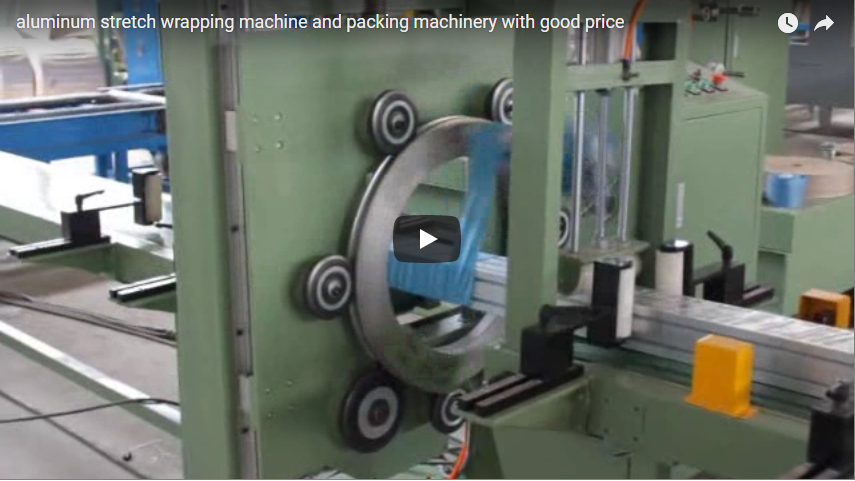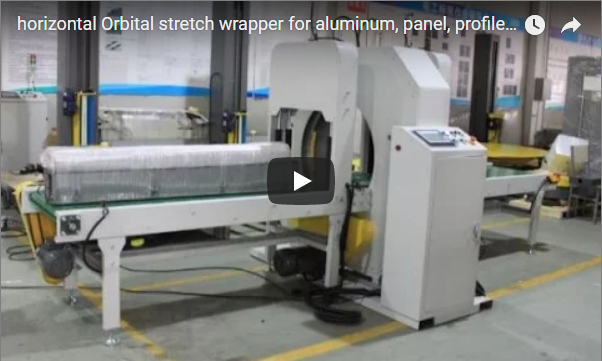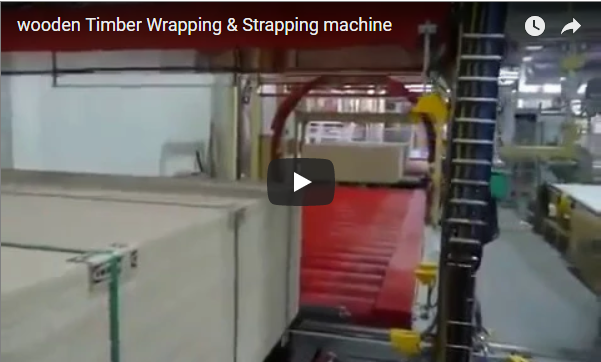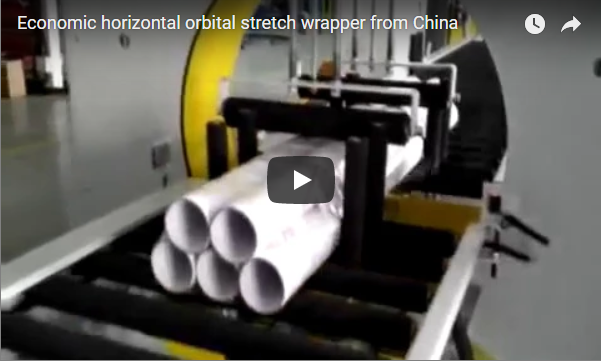Optimizing Timber Packaging: A Deep Dive into Automated Strapping and Wrapping Systems
Handling and packaging bulk timber, lumber, and related wood products presents unique challenges due to weight, dimensions, susceptibility to damage, and the need for secure bundling. Manual packaging methods are often labor-intensive, inconsistent, and can pose safety risks. Automated timber strapping and wrapping machines offer a robust solution, significantly enhancing efficiency, package integrity, and protection throughout the supply chain. This article explores the technology, operational aspects, and benefits of these integrated packaging systems.
1. The Core Functions: Strapping and Wrapping Explained
Automated timber packaging typically involves two primary stages: strapping for unitization and stability, followed by wrapping for protection.
1.1. Timber Strapping: Ensuring Load Stability
Strapping applies high-tensile bands around the timber bundle to secure it tightly. This is crucial for:
- Unitization: Keeping individual pieces (planks, beams, panels) together as a single manageable unit.
- Compression: Reducing the overall volume and preventing shifting within the bundle.
- Load Stability: Ensuring the bundle remains secure during handling, storage, and transport.
Common Strapping Materials for Timber:
- Polyester (PET) Strapping: Offers high strength, good tension retention, and resistance to environmental factors. Ideal for most timber applications.
- Steel Strapping: Provides maximum strength and rigidity, often used for very heavy or unstable loads, though it can potentially damage wood surfaces if not applied carefully (corner protection is often recommended).
- Polypropylene (PP) Strapping: A lighter-duty option, suitable for smaller bundles or where high tension is not the primary requirement.
Sealing Methods:
- Friction Weld: Common with PET/PP straps, creating a strong bond by melting the strap ends together via friction.
- Heat Seal: Uses heat to fuse PP or PET strap ends.
- Metal Seals/Clips: Typically used with steel strapping, requiring a separate sealing tool or integrated sealer.
1.2. Timber Wrapping: Protection Against the Elements
Following strapping, an orbital wrapping process often applies layers of stretch film around the bundle. This provides vital protection against:
- Moisture: Shielding wood from rain, snow, and humidity, which can cause warping, swelling, or mold growth.
- Dust and Dirt: Keeping the timber clean during storage and transit.
- Surface Damage: Offering a layer of protection against scratches and abrasions.
- UV Degradation: Specialized UV-inhibitor films can protect timber stored outdoors.
The Orbital Wrapping Process:
A ring or rotating arm carries a roll of stretch film and orbits around the stationary or moving timber bundle, applying the film helically. Key aspects include:
- Stretch Film: Typically Linear Low-Density Polyethylene (LLDPE), available in various thicknesses (gauges).
- Pre-Stretch: Modern wrappers stretch the film before application (often 150-300%), maximizing film yield and improving load containment force.
- Overlap Control: Ensuring consistent film overlap for complete coverage.
2. Key Machine Components and Configurations
Timber strapping and wrapping lines are modular and can be configured based on specific needs, but typically include:
- 2.1. Conveyor Systems: Heavy-duty roller or chain conveyors transport the timber bundles into, through, and out of the machine. Powered and non-powered sections manage flow.
- 2.2. Strapping Arch/Head: The structure through which the strap is fed around the bundle. The strapping head tensions, seals, and cuts the strap. Advanced heads offer precise tension control.
- 2.3. Wrapping Ring/Arm: The core component of the orbital wrapper, supporting and dispensing the stretch film roll. Ring speed (RPM) dictates wrapping throughput.
- 2.4. Film Carriage: Holds the film roll and incorporates the pre-stretch mechanism (rollers driven at different speeds).
- 2.5. Control System (PLC): The machine's brain, typically using a Programmable Logic Controller (PLC) and a Human-Machine Interface (HMI) touchscreen. Allows operators to set parameters like:
- Number and position of straps
- Strap tension
- Number of film wraps (start, end, and body)
- Wrapping overlap percentage
- Film pre-stretch ratio
- Conveyor speed
- 2.6. Optional Modules:
- Top/Side Press: Compresses the bundle before strapping for a tighter pack.
- Automatic Corner Protectors: Places cardboard or plastic edge protectors before strapping to prevent damage.
- Batten/Dunnage Applicators: Automatically places wooden supports under the bundle.
- Weighing Systems: Integrated scales for recording pack weight.
3. Technical Specifications and Performance Metrics
When evaluating these machines, consider the following technical data points:
Parameter Examples:
- Maximum Pack Dimensions (L x W x H): Defines the largest bundle the machine can handle (e.g., 6000mm x 1200mm x 1200mm).
- Strapping Arch/Ring Size: Must accommodate the maximum pack cross-section.
- Strap Types Supported: PET, PP, Steel (specify width and thickness ranges).
- Strapping Tension Range: Adjustable force applied (e.g., 500 - 7000 N).
- Strapping Speed: Cycle time per strap or straps per minute.
- Wrapping Ring Speed: Rotations Per Minute (RPM) (e.g., 30-60 RPM).
- Film Pre-Stretch Ratio: Maximum achievable stretch (e.g., up to 300%).
- Power Requirements: Voltage, phase, total consumption (kW).
- Compressed Air Requirements: Pressure (bar/psi) and consumption (L/min or CFM) if pneumatic components are used.
Key Performance Indicators (KPIs):
- Throughput: Packs processed per hour or shift.
- Material Consumption: Strap length and film weight used per pack.
- Uptime/Reliability: Percentage of scheduled time the machine is operational (OEE - Overall Equipment Effectiveness).
- Package Quality: Consistency of strap placement/tension and wrap coverage.
4. Operational Considerations and Best Practices
Maximizing the value of an automated timber packaging system involves more than just the initial investment:
- Material Selection: Use high-quality strap and film appropriate for the load characteristics and environmental conditions. Incompatible or poor-quality consumables can lead to jams and package failures.
- Machine Setup and Calibration: Ensure correct initial setup and regular calibration of tension settings, sealing parameters (temperature/time for heat/friction seals), and pre-stretch levels.
- Preventive Maintenance: Adhere strictly to the manufacturer's recommended maintenance schedule (lubrication, inspection of wear parts like cutters and sealers, sensor cleaning).
- Operator Training: Properly train personnel on machine operation, safety procedures, consumable loading, HMI navigation, and basic troubleshooting.
- Integration: Plan for seamless integration with upstream (e.g., sawing, stacking) and downstream (e.g., labeling, warehousing) processes. Buffer conveyors can help smooth out line imbalances.
- Safety: Ensure all safety guards, emergency stops, and interlocks are functional. Follow Lockout/Tagout (LOTO) procedures during maintenance.
5. Benefits Beyond Speed: Achieving Superior Packaging
Investing in automated timber strapping and wrapping delivers multifaceted advantages:
- Enhanced Load Integrity: Consistent strap tension and secure wrapping significantly reduce the risk of product damage during handling and shipping.
- Improved Efficiency & Throughput: Dramatically increases packaging speed compared to manual methods, reducing bottlenecks.
- Reduced Labor Costs: Frees up personnel from strenuous and repetitive manual strapping/wrapping tasks.
- Enhanced Safety: Minimizes risks associated with manual handling of heavy bundles and strapping tools.
- Material Cost Savings: Optimized strap tension and film pre-stretch reduce consumable usage per pack.
- Professional Package Appearance: Consistent, tightly wrapped bundles project a higher quality image.
- Data Potential: Advanced systems can log production data (pack counts, material usage, fault codes) for process analysis and improvement.
Conclusion
Automated wooden timber strapping and wrapping machines are indispensable tools for modern timber processing and distribution operations. By providing consistent, high-quality packaging, they enhance product protection, optimize logistical efficiency, improve worker safety, and contribute significantly to the bottom line. Understanding the underlying technologies, key specifications, and operational best practices allows businesses to select and utilize these systems effectively, ensuring their timber products arrive securely and in optimal condition.
Further Information:
For related horizontal wrapping solutions, see: Horizontal Wrapping Machines
Consider consulting resources from packaging industry associations like the Packaging Machinery Manufacturers Institute (PMMI) or timber trade organizations for broader standards and insights.






